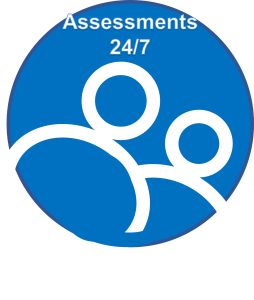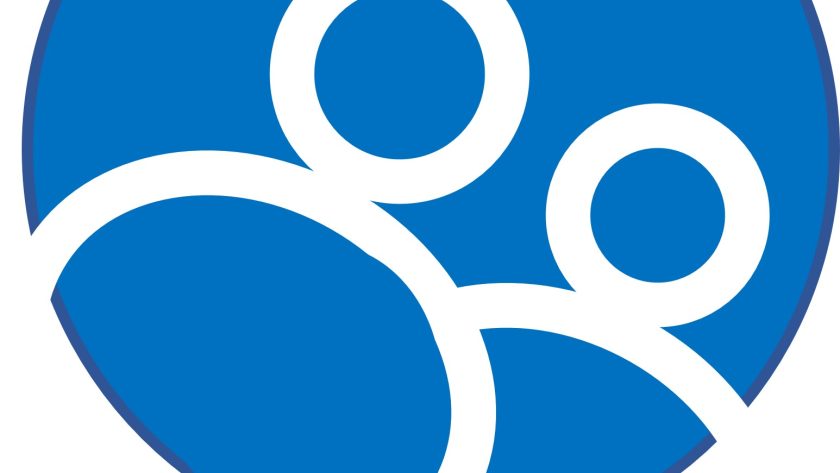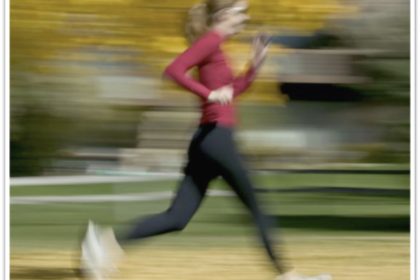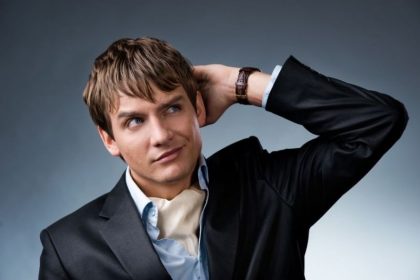Published with Permission from Assessments 24/7.

This is a Monday blog series; our regular coaching blog will be published on Thursday’s.
Dominance – High “D” Style
AT THE OFFICE
When entering a Dominance Style’s office, the overall tone suggests authority and control. Their desks may be covered with projects and papers, stacked in neat piles. Both in- and out-baskets typically bulge with busywork. They tend to surround themselves with trophies, awards, and other evidence of personal achievement. Virtually everything about the place suggests hustle, bustle, formality, and power. This type often favors a large chair behind a massive authority structure, like a power desk. Besides non-verbally announcing, “I’m important,” the desk separates them from others, literally keeping them at a distance.
The walls may include diplomas, commendations, and other evidence of success. One wall may be covered with a large planning sheet or calendar. If Dominance Styles have family photos, they may hang behind them or someplace where they don’t readily see them. To this type, their offices are places of business, and the fewer distractions they have, the better.
HUSTLE, BUSTLE, AND BUSYWORK
Dominance Styles like constant activity, so you’ll seldom catch them idle. Between existing tasks, they are likely to pick up new ones. They perk up when competing and appear to thrive with a pressure cooker schedule. They often squeeze you onto their calendars and let you know that their time is limited, either by telling you outright or by showing you. Looking at a watch or clock, they frequently shift their gaze elsewhere, or make and take phone calls while you sit in their office.
They walk fast in pursuit of a tangible goal, so Dominance Styles may not notice people around them or may just hurriedly grunt something to acknowledge them. They often act both brisk and brusque without realizing it. When under stress, impatience emerges and they may push others aside to reach their goal – completing a report, getting served first, or running out the door to make an appointment. When pressure intensifies, Dominance Styles often rise to the occasion. Under time constraints, they may concede to impatience and rely on educated guesses or their hunches. The urgency of resolution is more important than accuracy.
POWER SYMBOLS
Dominance Styles tend to dress comfortably but in a way that shows their position or influence. They focus primarily on work results, so wardrobe tends to play a secondary role. They may be candidates for a time-saving personal shopper or tailor who can choose or measure outfits for them in the privacy of their own offices. Dominance Styles gravitate toward authority symbols, so they may wear navy blue or charcoal gray power suits.
Dominance Styles may like to let people know they’ve made it without having to tell anyone about it, so they often prefer possessions that emit success and authority messages – like a black or steel gray Mercedes or BMW. Someone once suggested that they’d buy a tank if they could.
Influence – High “I” Style
AT THE OFFICE
When you enter the working area of an Influence Style, you may recognize it immediately. High Influence Styles may have a desk covered with paperwork, sometimes trailing it along the floor, too. They react to visual stimuli, so they like to have everything where they can see it. Consequently, their desks often look cluttered and disorganized. If anyone comments, “How do you find anything?” they like to say that they’re organized in their own way.
An Influence Style’s walls may showcase prestigious awards. They may be broad, liberal arts degrees, motivational or upbeat slogans, generalized personal comments, or stimulating posters. You may see notes posted and taped all over the place with little apparent forethought, rhyme, or reason. The overall decor reflects an open, airy, lively atmosphere that often reveals the personality of its occupant. Likewise, the furniture arrangement tends to indicate warmth, openness, and interaction. An Influence Style seldom sits behind a desk and talks. Instead, they often opt for comfortable, accessible seating, enabling getting to know people better. They prefer to sit next to others at a table or on a couch to see and hear better and get a feel for how people respond. This style talks a lot and shows emotion with both body language and speech.
FEELINGS TAKE PRIORITY
Influence Styles have a natural preference for talking and listening in feeling terms. Unconsciously, they may become uncomfortable when talking to a person who, instead, uses thinking words. (The opposite also is true). Statements that highlight emotions like, “I feel that we should have been consulted about moving our office,” or, “I feel good about what we’ve accomplished today,” tend to put this people-oriented type more at ease.
THEY LIKE GLITZ AND PIZZAZZ!
The way Influence Styles dress often relates to their need for recognition. Since they like others to notice them, they may dress in the latest style or something particularly eye-catching (sparkles!). The “look at me” Influence Styles like bright colors and unusual clothes that prompt others to compliment them. Many Influence Styles even prefer negative comments to none at all, getting the attention that is craved.
In an informal poll taken by Dr. Tony at his many seminars, red ranks number one with Influence Styles as their color choice for clothes or a sports car or convertible. They like glamour, flash, and excitement, and their purchases often express their preferences. Musical choices include fun, energizing songs that make people want to move.
Steadiness – High “S” Style
OFFICE MEMORABILIA
When you enter a Steadiness Style’s office, you’ll find conservatively framed personal slogans, group photos, serene landscapes and posters, and other personal items. Since they seek close relationships, there will likely be telltale family pictures and mementos, usually turned so they can view them from their desk chair. They often favor nostalgic memories of grounding experiences and relationships in an increasingly busy, impersonal, and high-tech world. These remembrances of a pleasant, uncomplicated past allow them to transform their offices into an environment of friendly warmth. They prefer to arrange seating in a side-by-side, more congenial, cooperative manner. No big power desks for them! If they do have one, though, they’ll typically come out from behind it to interact, opting for a more personal touch.
SERVICE CERTIFICATES
Their educational background often includes more specialized areas of attention and interest within their professions. You may also see certificates recognizing volunteer hours for various hands-on activities in their community. While other behavioral types may contribute in other ways, such as gifts or money, Steadiness Styles typically enjoy giving their time for causes about which they feel strongly. Besides the possibility of meeting more potential friends, this also helps satisfy their need to see for themselves: (1) what’s going on, (2) where they fit into the group effort, and (3) how they can contribute and support meaningful results.
STEADINESS STYLES ARE NATURAL LISTENERS
You can recognize Steadiness Styles by their natural listening patterns and slower, lower-key delivery in conversation. They are unlikely to interject and are much more likely to allow the conversation to pace itself naturally. Their questions may focus on concrete topics and experiences and will likely be comprehensive, deep, and thoughtful. They walk casually with a soft approachability, acknowledging others and sometimes getting sidetracked by chance encounters that present an opportunity to engage with others.
NOTHING TOO LOUD FOR THEM
Steadiness Styles dislike calling attention to themselves, so they tend to wear subdued colors and conservatively cut clothing, favoring conventional styles that don’t stand out too much. Their cars also reveal these preferences. They often like beige or light blue station wagons or vans, factory recommended tires, and in the best of all worlds – no horn. To Steadiness Styles, using a horn is like yelling at somebody. They also prefer their environments to be relaxing and comfortable, often with soft music, specialty lighting that is not too harsh, and an open-door that invites others into their space.
Conscientiousness – High “C” Style
AT THE OFFICE
Conscientiousness Styles often carry their organizational tendencies into their work environments. Visible clues that you are working with a C style include neat, highly organized desks with cleared tops so they can work unimpeded by clutter – clean and professional with everything in the appropriate place. Charts, graphs, exhibits, models, credentials, and job-related pictures are often placed neatly on their office walls or shelves. Conscientiousness Styles favor functional decor that will enable them to work more efficiently. They tend to keep most objects within reach, readily available when needed. Where appropriate, you may notice state-of-the-art technology to further enhance efficiency.
CONSCIENTIOUSNESS STYLES ASK PERTINENT QUESTIONS
People of few words, Conscientiousness Styles tend to ask pertinent questions instead of making statements. They typically speak more carefully and with less expression than the other types. They are likely to be slow to speak until they are confident that what they are sharing is completely accurate as well. Reluctant to reveal personal feelings, they often use thinking words (like the Dominance Style), as opposed to feeling words. “From what I’ve read, I think Product X may be better for our situation than Product Y because of its superior filtration system,” or, “I think that Jones is overreacting in this matter.”
FORMALITY IS MORE COMFORTABLE
Conscientiousness Styles are non-contact people who prefer the distance formality provides. This preference is reflected in the functional, but uninviting, arrangement of their desks and chairs, usually with the desks physically separating you and them. They generally are not fond of huggers and touchers and prefer a cool handshake or a brief phone call. When Conscientiousness Styles walk, they usually move slowly and methodically toward a known destination.
NOTICEABLY UNDERSTATED
Conscientiousness Styles tend to wear more conservative clothes, but with unique, often perfectly matched accessories. While the Influence Style may draw attention to herself with glitz and glitter, Conscientiousness Styles usually prefer a more understated, faultlessly groomed look, often in classic, muted tones.
They like expressions of individuality and creativity but within specific guidelines. Male Conscientiousness Styles with beards seem to prefer short, well-manicured ones. Hairstyles are likely to be neat and symmetrical. Since they may prefer exploring life’s complexities, Conscientiousness Styles may enjoy the intricacies of a specific kind of music or individual musical piece, whether jazz, classical, rock, etc. You may spot them driving well-built, practical cars that perform as expected and dependably, often in more conservative, understated, but less common colors.
In the next blog, how to identify styles on the phone is explained.




